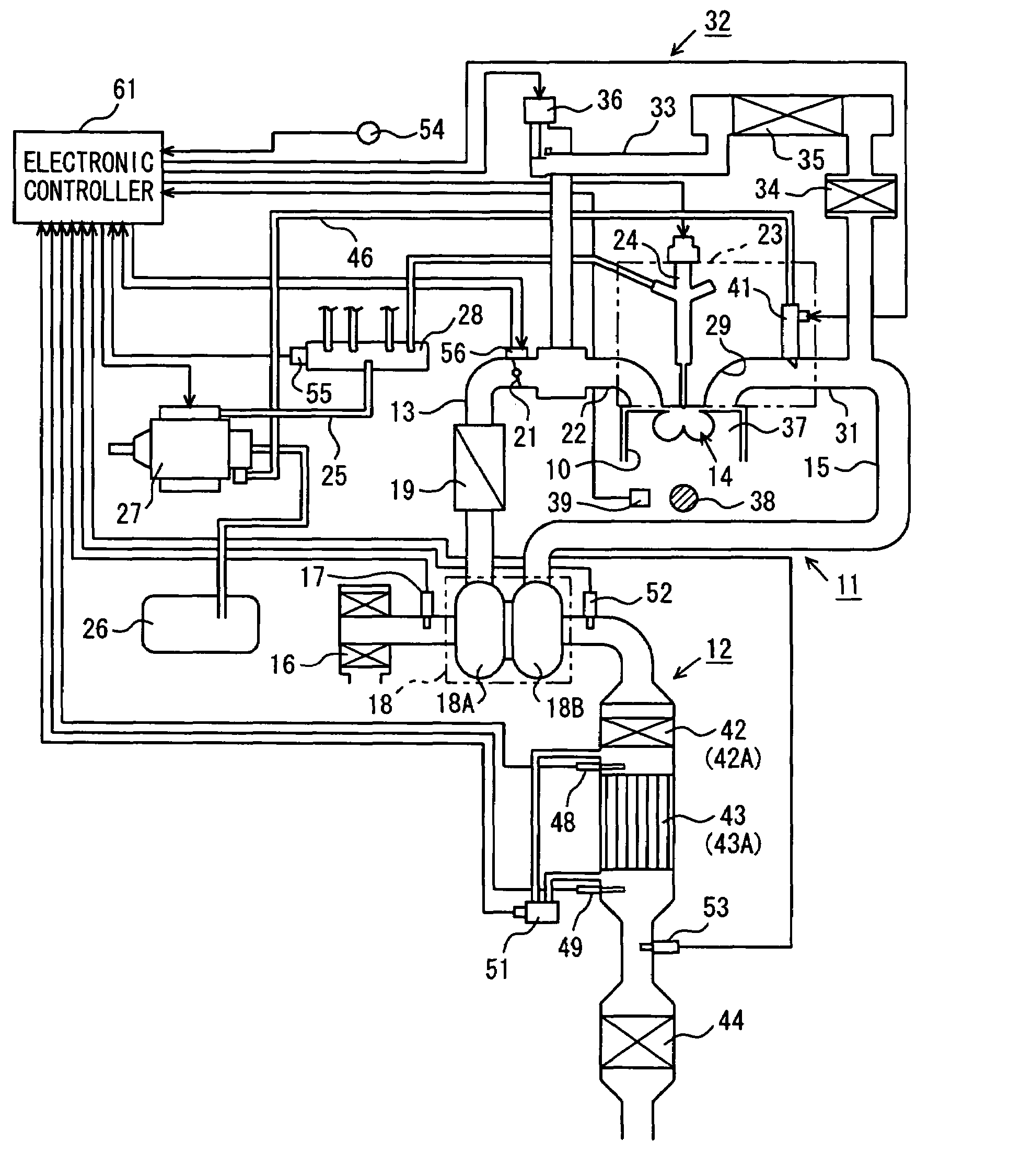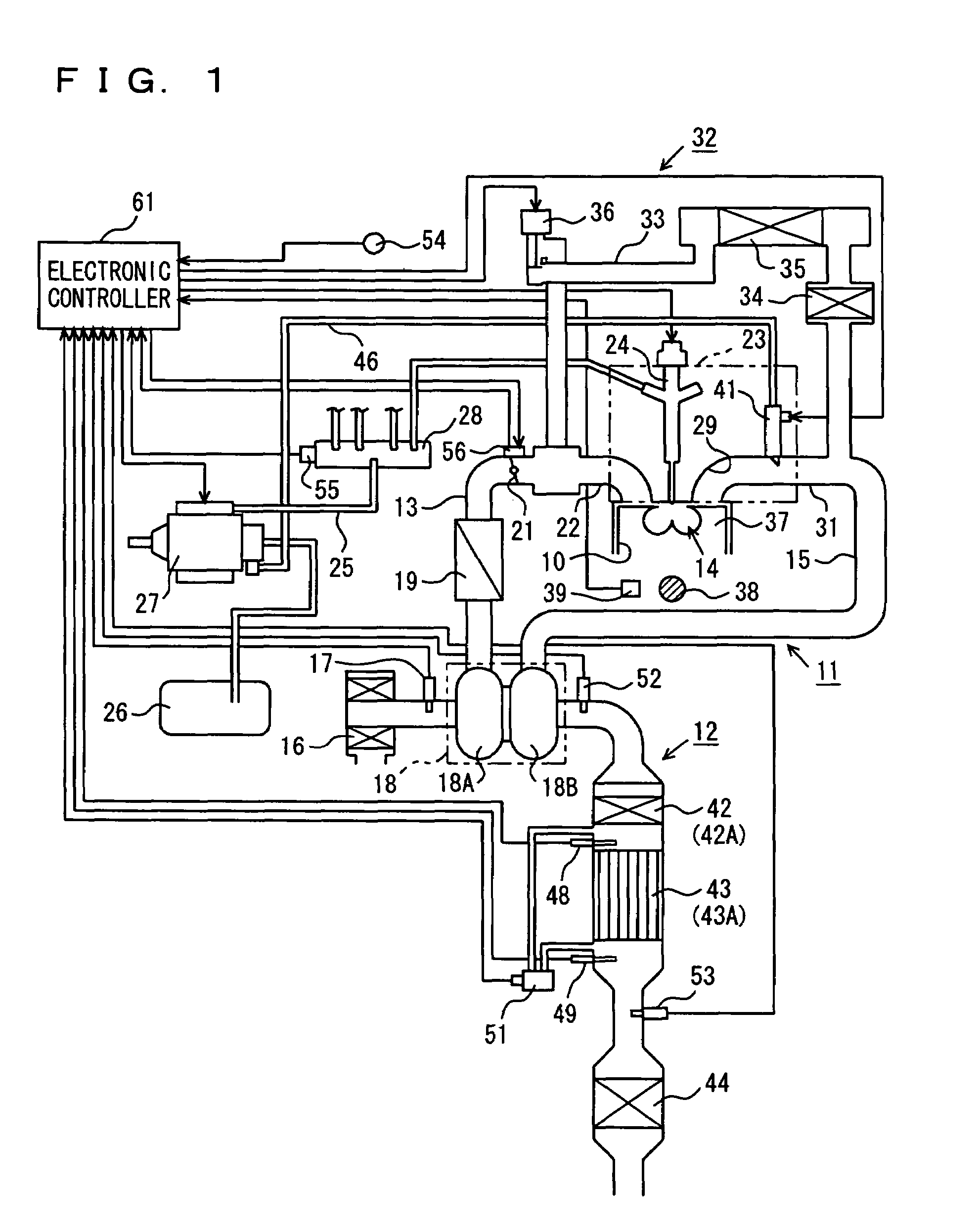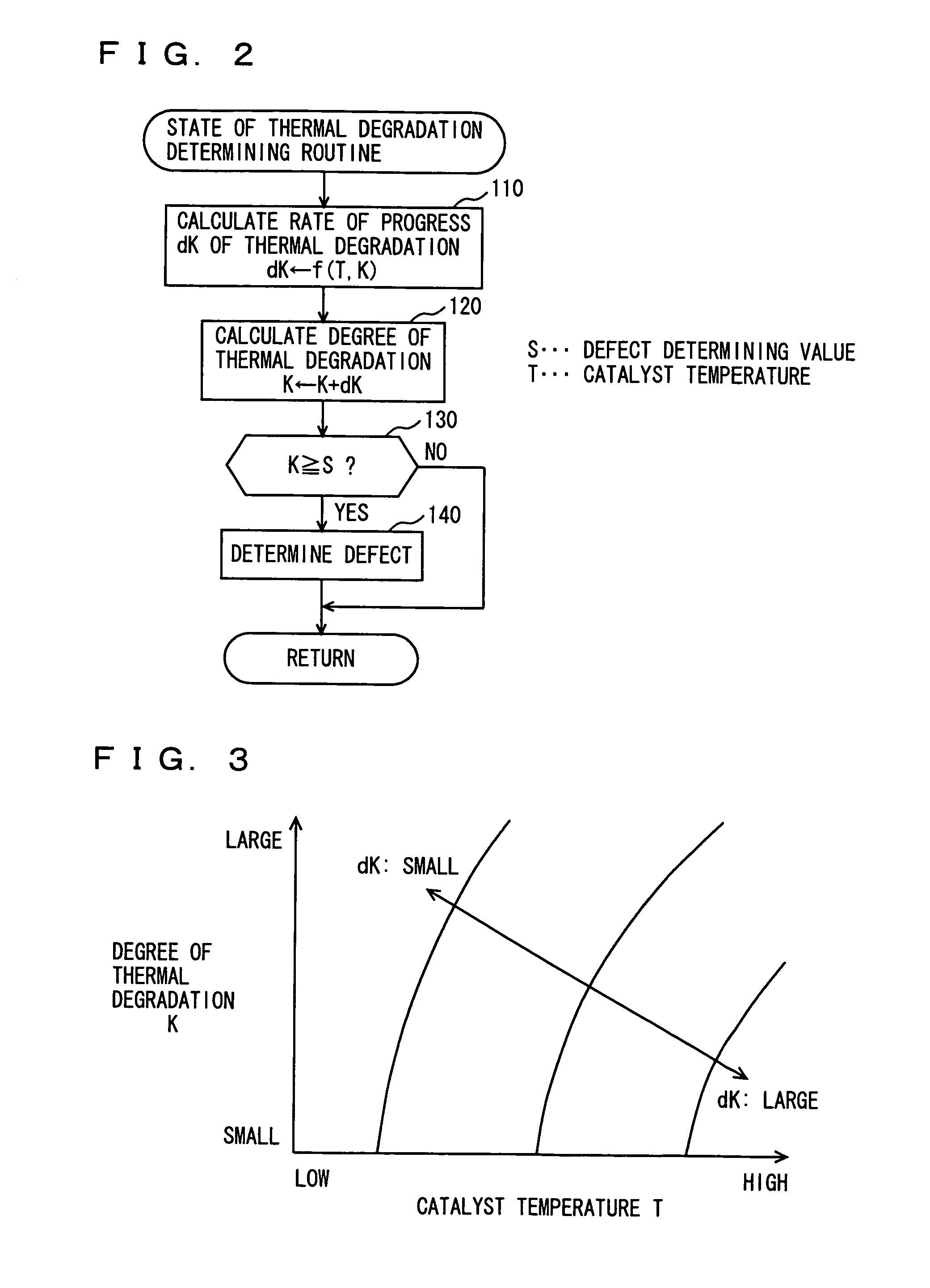Device for detecting state of thermal degradation of exhaust purifying catalyst
a technology of thermal degradation and exhaust purification catalyst, which is applied in the direction of electrical control, instruments, machines/engines, etc., can solve the problems of gradual degradation of catalyst purification performance and the progress of thermal degradation of exhaust purifying catalyst, and achieve the effect of improving detection accuracy
- Summary
- Abstract
- Description
- Claims
- Application Information
AI Technical Summary
Benefits of technology
Problems solved by technology
Method used
Image
Examples
Embodiment Construction
[0031]In the following, an embodiment of the present invention will be described with reference to the figures. FIG. 1 shows configurations of a multi-cylinder diesel engine (hereinafter simply referred to as the engine) as an internal combustion engine and its exhaust purifier 12, to which the present embodiment is applied.
[0032]Engine 11 mainly includes an intake passage 13, a combustion chamber 14 provided in each cylinder 10, and an exhaust passage 15. At the uppermost stream of intake passage 13, an air cleaner 16 for purifying air introduced to intake passage 13 is provided. In engine 11, an air flow meter 17 for detecting air flow rate in intake passage 13, a compressor 18A of a turbo charger 18, an inter cooler 19, and an intake throttle valve 21 are arranged in this order to the downstream side of intake air flow, from air cleaner 16. Intake passage 13 is branched at an intake manifold 22 provided downstream of intake throttle valve 21 along the intake air flow, and connect...
PUM
 Login to View More
Login to View More Abstract
Description
Claims
Application Information
 Login to View More
Login to View More - R&D
- Intellectual Property
- Life Sciences
- Materials
- Tech Scout
- Unparalleled Data Quality
- Higher Quality Content
- 60% Fewer Hallucinations
Browse by: Latest US Patents, China's latest patents, Technical Efficacy Thesaurus, Application Domain, Technology Topic, Popular Technical Reports.
© 2025 PatSnap. All rights reserved.Legal|Privacy policy|Modern Slavery Act Transparency Statement|Sitemap|About US| Contact US: help@patsnap.com



